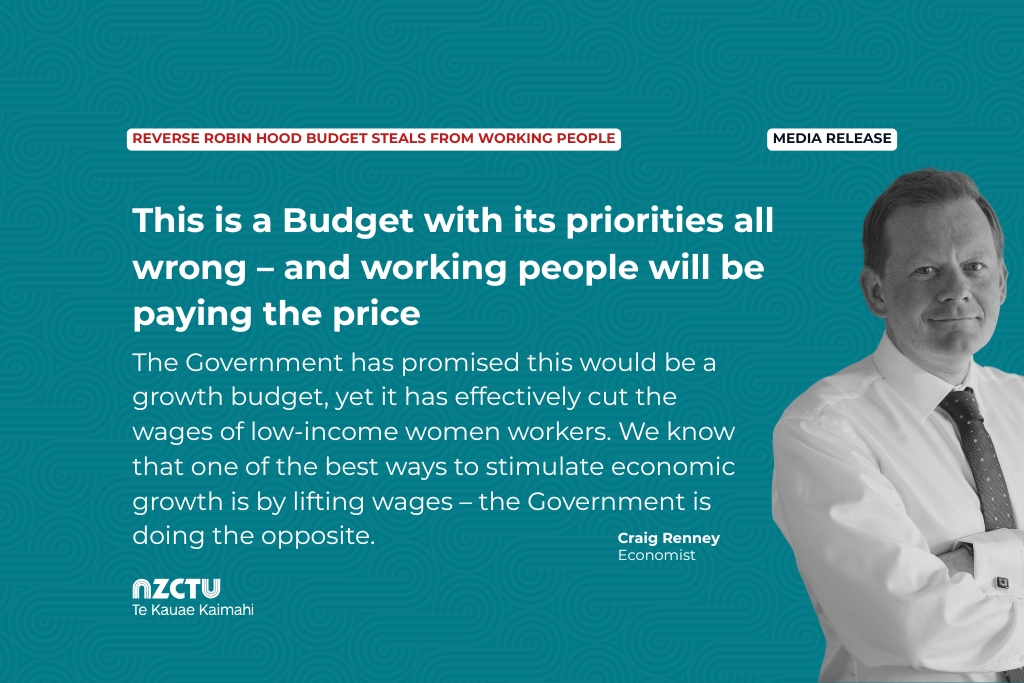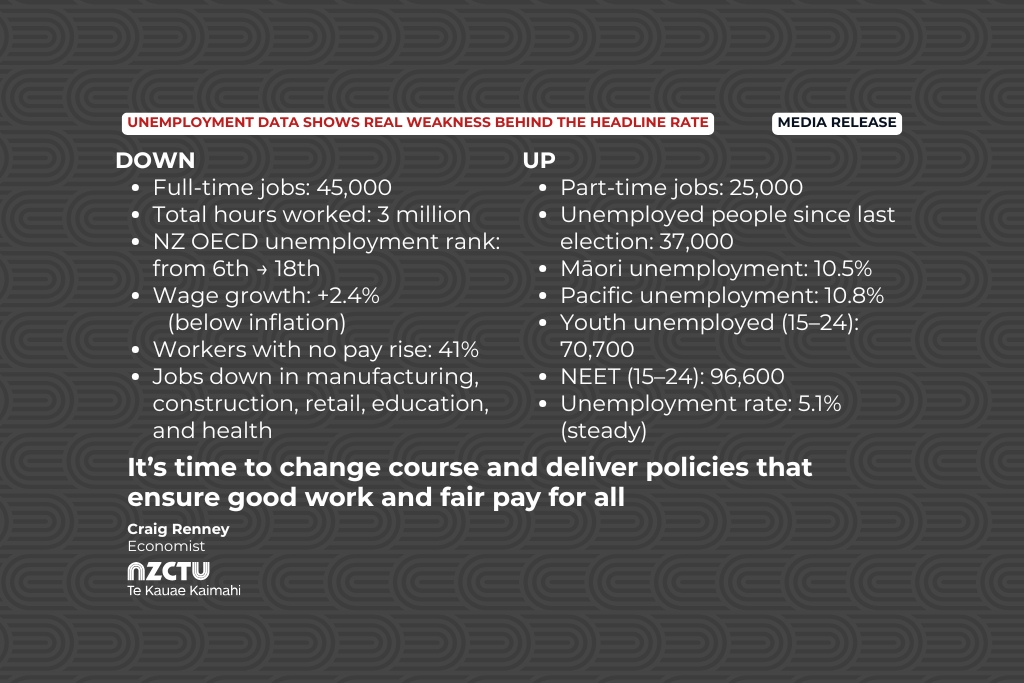Source: Team effort to rescue teens
Budget 2025 takes $12.8bn from low-income, female dominated workforces to prop up the Government’s failed economic policies, said NZCTU Te Kauae Kaimahi Economist Craig Renney.
“The Government has promised this would be a growth budget, yet it has effectively cut the wages of low-income women workers. We know that one of the best ways to stimulate economic growth is by lifting wages – the Government is doing the opposite,” said Renney.
“The figures released today also showed that the number of people on Jobseekers Support is rising, and higher than forecast just last year. Real wage growth is lower than forecast last year – the Treasury itself says the Budget “lowers wage growth”. This is a Budget that is taking working people backwards.
“The Budget delivers more cuts to investment, including real terms cuts to early childhood education funding. New funding for learning support is largely being delivered by cutting funding from other programmes in education. Māori Development programmes have been cut significantly, as has funding from our media, culture, and heritage institutions.
“Promises made in health aren’t provided with new funding and the destruction of the pay equity process will mean we will continue to lose health workers to Australia, putting further stress on the system.
“Forecasts show we will continue to miss our child poverty targets over the next four years, and we will see thousands of families loose essential income due to cuts to Best Start and Working for Families. The Government is taking money from unemployed 18- and 19-year-olds, while investing nothing in action on climate change.
“Overall, this is a Budget that works by taking away from some of the poorest people in New Zealand, to fund tax cuts for multinationals, increased investment in corrections, the failed charter schools project, and more spending on defence.
“This is a Budget with its priorities all wrong – and working people will be paying the price,” said Renney.


